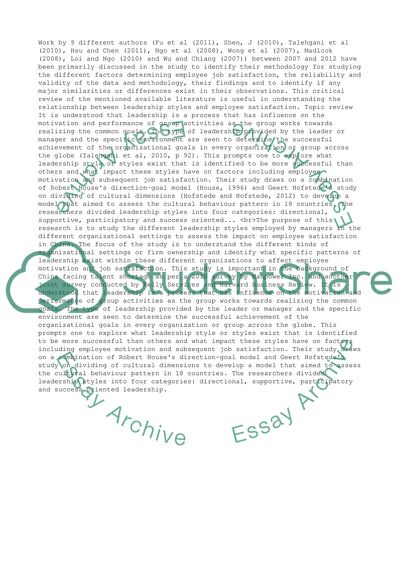Cite this document
(“What kind of leadership style improves employee satisfaction in China Literature review”, n.d.)
Retrieved from https://studentshare.org/management/1395510-what-kind-of-leadership-style-improves-employee-satisfaction-in-china
Retrieved from https://studentshare.org/management/1395510-what-kind-of-leadership-style-improves-employee-satisfaction-in-china
(What Kind of Leadership Style Improves Employee Satisfaction in China Literature Review)
https://studentshare.org/management/1395510-what-kind-of-leadership-style-improves-employee-satisfaction-in-china.
https://studentshare.org/management/1395510-what-kind-of-leadership-style-improves-employee-satisfaction-in-china.
“What Kind of Leadership Style Improves Employee Satisfaction in China Literature Review”, n.d. https://studentshare.org/management/1395510-what-kind-of-leadership-style-improves-employee-satisfaction-in-china.


